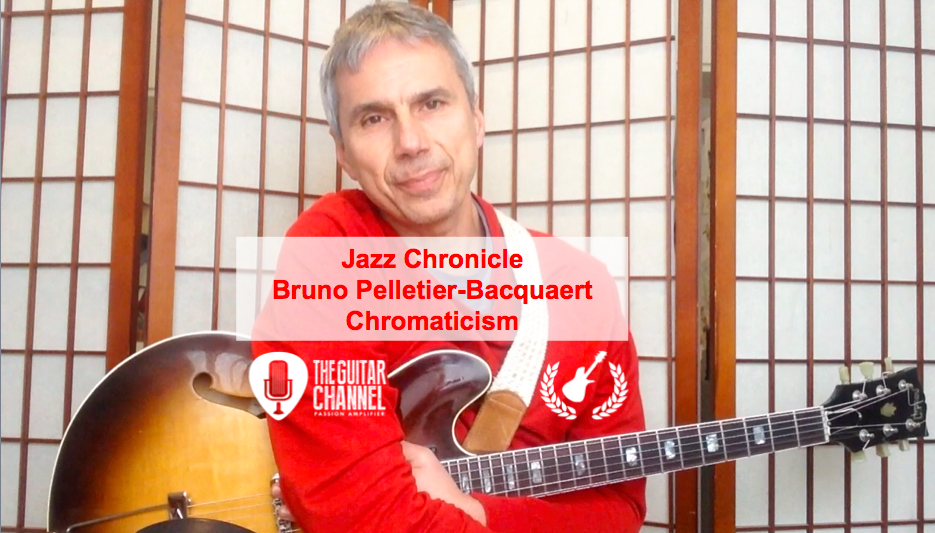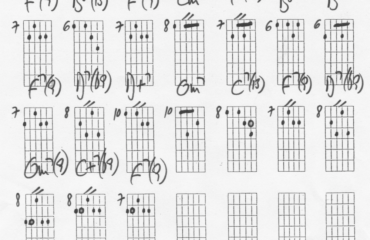How can we make our playing more colorful, more jazz-sounding? Let’s use some guitar Chromaticism!
Using Chromaticisms simply means adding extra notes to our melodies, our arpeggios, or our scales. However, those extra notes are not found in the original tonality. They are used as passing-tones, in order to generate a certain tension, but will eventually need to resolve into a consonant note.
Guitar Chromaticism by Bruno
Let’s start with a simple C Major scale:
- C D E F G A B C
Let's now insert an additional note in between G and A.
We now have:
- C D E F G (G#) A B C
This is an 8-note scale, consisting of a Major Scale with an added raised 5th (#5).
That G# can be considered a “wrong” note, as it is not normally found in the tonality of C Major. Used as a chromaticism, though, it can add an interesting dissonance to an otherwise plain and bland C Major scale.
We happen to have created a BeBop Scale.
Instead of the G#, we could add an F#:
- C D E F (F#) G A B C
We now have another 8-note scale, consisting of a Major Scale with an added raised 4th (#4).
That scale is just another type of BeBop Scale.
You see, there isn't just one so-called BeBop Scale, but a large number of them-- in fact, what we call "BeBop Scales" is actually a concept, and not a particular scale. The idea is that we can insert a extra note into an already existing scale or mode. That extra note will be a passing tone, and it is called a guitar chromaticism.
Here are all the possible BeBop scales that may be generated by adding a guitar chromaticism to a C Major Scale:
- C D E F G (G#) A B C (preferred Major BeBop scale)
- C D E F (F#) G A B C
- C D (D#) E F G A B C
- C (C#) D E F G A B C
If you have any questions or comments, do not hesitate to contact me through The Guitar Channel by commenting below or directly through my website brunojazz.com.
See you again soon!
Bruno.
Note from The Guitar Channel
If you are looking for an excellent Jazz guitar teacher, I highly recommend Bruno. He produced many Jazz chronicles in French for La Chaîne Guitare which were highly appreciated by the Backstage Pass subscribers. I also took a Skype lesson with him once (read the story about it in this article) and it was a lot of fun and very useful to help my play better and increase my vocabulary on guitar.

Pierre.
Get the Backstage Pass to watch all the exclusive videos and more!
Click here for more info on the Backstage Pass





